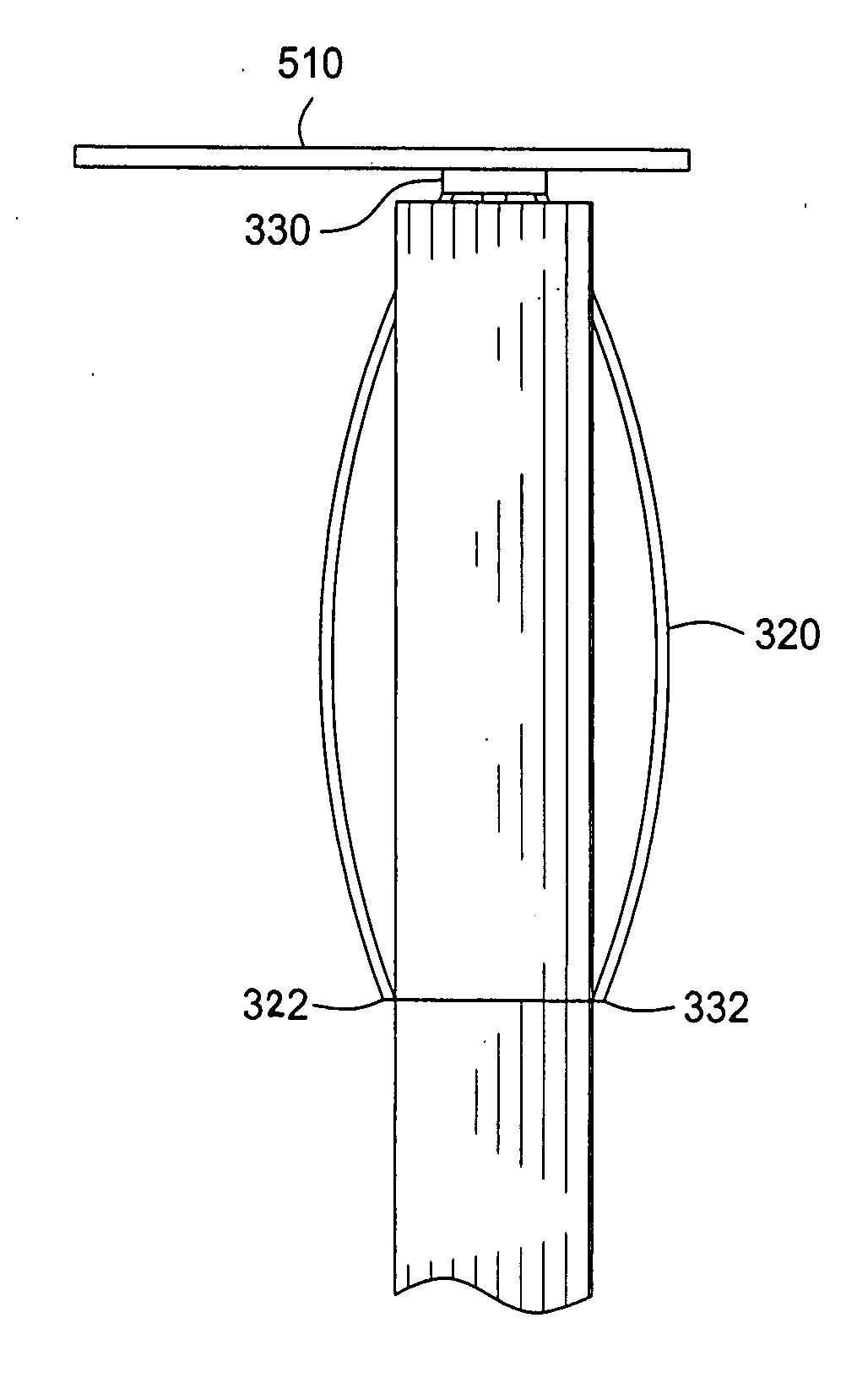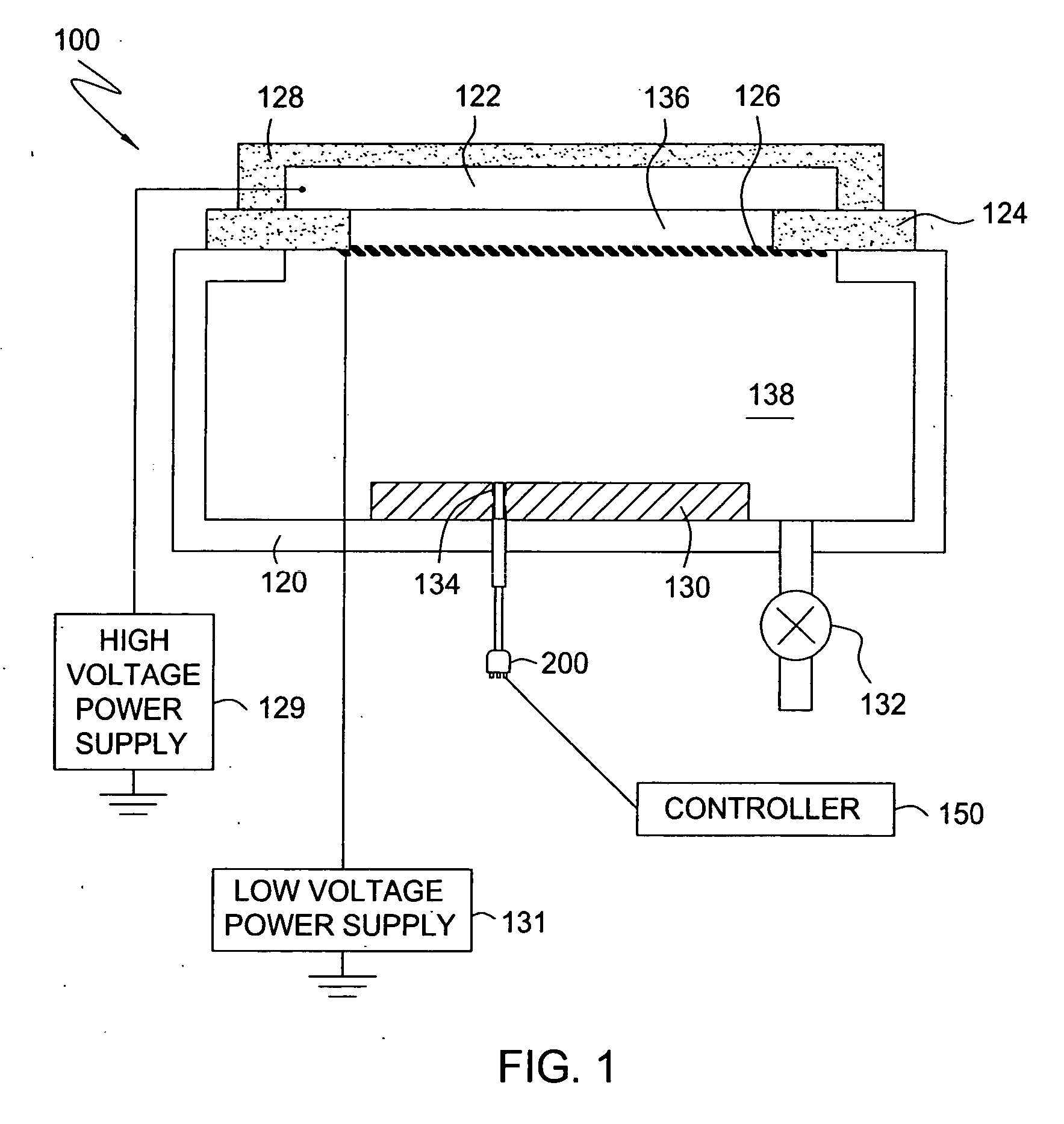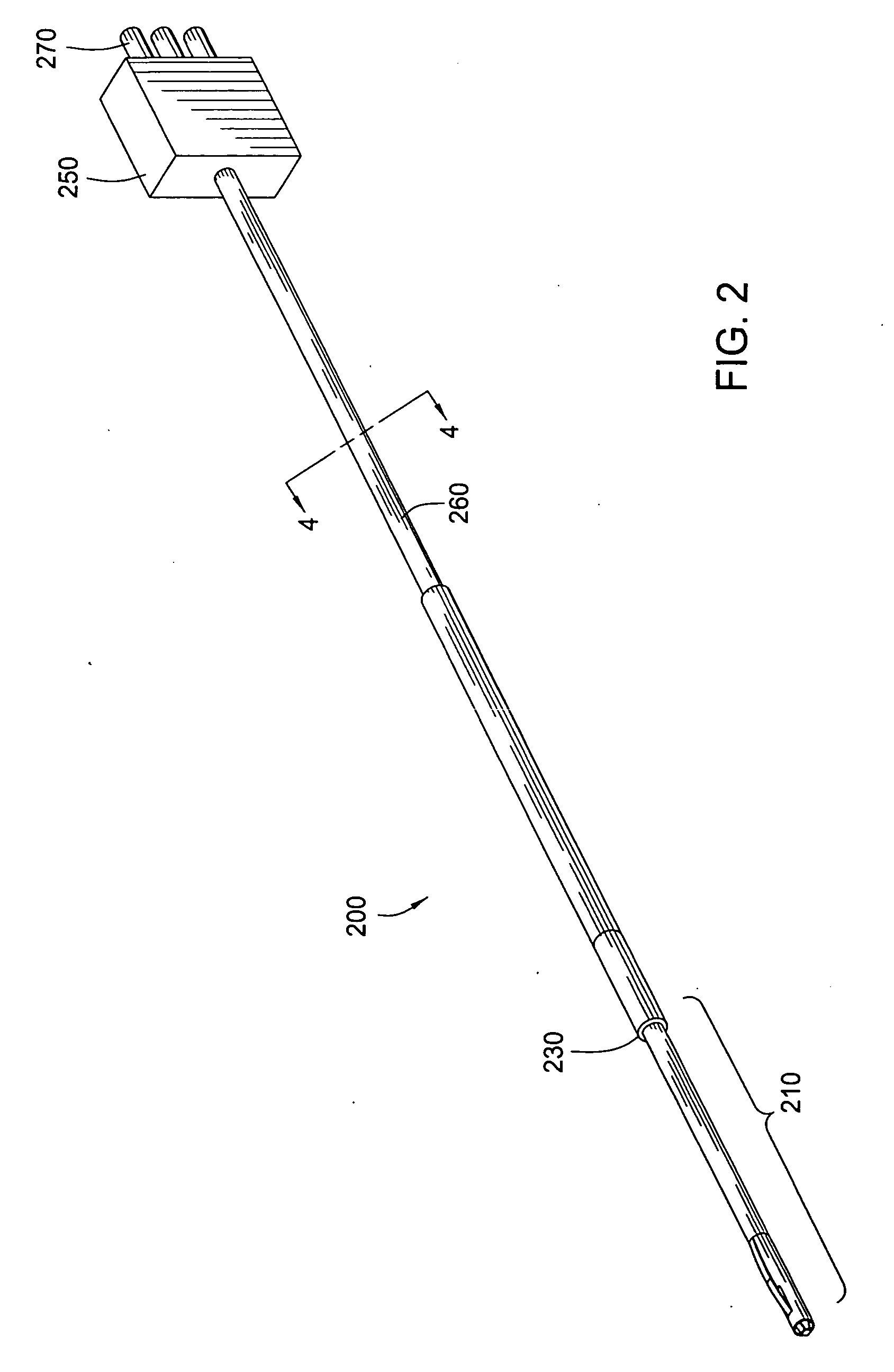Thermally conductive ceramic tipped contact thermocouple
a ceramic and contact thermocouple technology, applied in the direction of heat measurement, semiconductor/solid-state device testing/measurement, instruments, etc., can solve problems such as contamination problems, failure of integrated circuits, and mechanical strength
- Summary
- Abstract
- Description
- Claims
- Application Information
AI Technical Summary
Problems solved by technology
Method used
Image
Examples
Embodiment Construction
[0022] Embodiments of the present invention provide a thermocouple assembly comprising a ceramic tip. These embodiments may be used in other processing chambers including but not limited to CVD, PVD, PECVD or any other processing or manufacturing chambers requiring temperature monitoring.
[0023]FIG. 1 is a cross-sectional diagram of an exemplary processing chamber 100, the e-beam chamber, in accordance with an embodiment of the invention. The e-beam chamber 100 includes a vacuum chamber 120, a large-area cathode 122, a target plane or substrate support 130 located in a field-free region 138, and a grid anode 126 positioned between the target plane 130 and the large-area cathode 122. The target plane 130 contains at least one hole 134 that extends through the vacuum chamber 120, for embedding a temperature measuring element such as a thermocouple assembly 200. The thermocouple assembly 200 is connected to a controller 150. The e-beam chamber 100 further includes a high voltage insula...
PUM
 Login to View More
Login to View More Abstract
Description
Claims
Application Information
 Login to View More
Login to View More - R&D
- Intellectual Property
- Life Sciences
- Materials
- Tech Scout
- Unparalleled Data Quality
- Higher Quality Content
- 60% Fewer Hallucinations
Browse by: Latest US Patents, China's latest patents, Technical Efficacy Thesaurus, Application Domain, Technology Topic, Popular Technical Reports.
© 2025 PatSnap. All rights reserved.Legal|Privacy policy|Modern Slavery Act Transparency Statement|Sitemap|About US| Contact US: help@patsnap.com



